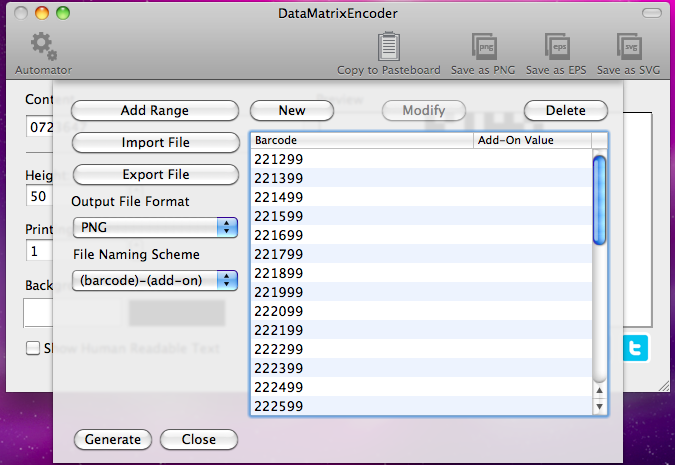


With ECC, as much as 60% of the barcode can be damaged, yet all of the data can be successfully decoded.Ī Data Matrix scanner best lends itself to applications where high data capacity and density are required without sacrificing data integrity. ECC is much more advanced than traditional checksums, as it is capable of not only detecting multiple errors or omissions (data that was unable to be read at all), but it can be used to correct both. Utilizing Reed-Solomon error correction (also known as Error Correction Codewords, or ECC).Practical limits are about half these numbers though. Storing very large amounts of data theoretically as many as 3116 numeric digits, 2335 alphanumeric characters, or 1556 bytes of binary data.Sophisticated data compaction techniques are used to store data in the barcode, allowing it to be very dense (i.e., storing a large amount of data in a relatively smaller area as compared to linear barcodes). Encoding numeric, alphanumeric, and binary data.Some of the key features and benefits of the symbology include: They can vary in size from as small as 10x10 modules to as large as 144x144 modules, with the smallest storing 6 bytes of data and the largest capable of storing thousands. The other two edges of the symbol are called the timing pattern (every other module is black/white) and is used during decoding to determine the size of the barcode:
DATA MATRIX BARCODE GENERATOR SOFTWARE
This pattern is used by the decoding software to orient the barcode, as well as to detect and compensate for any skew or distortion: They are easily recognizable from the “L” shaped finder pattern along two adjacent edges. They are almost always square, though some rectangular layouts are supported.
DATA MATRIX BARCODE GENERATOR CODE
Unlike linear barcodes (like Code 39 and UPC), where data is encoded using sets of varying width black/white patterns, each module in a symbol represents a single bit (with black typically representing ‘1’ and white representing ‘0’).

Each row is comprised of a fixed number of individual black or white squares called modules. It is referred to as a two-dimensional barcode because it stores data in both rows and columns (not just a single “row” of bar/space patterns). Data Matrix, or DataMatrix, was developed in the late 1980s by Acuity CiMatrix (now Siemens) and then placed in the public domain as a royalty-free, open standard in 1994 as a high-capacity, variable size, two-dimensional barcode.


 0 kommentar(er)
0 kommentar(er)
